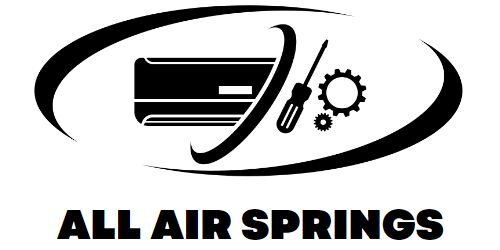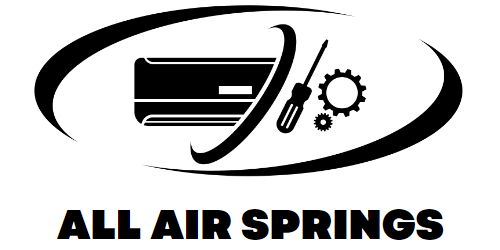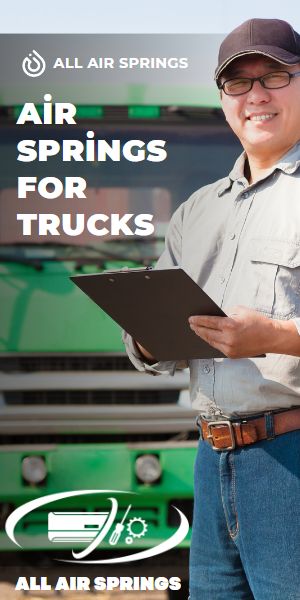Cabin Air Suspension: Benefits, Maintenance, and Why It’s Worth the Investment
Introduction to Cabin Air Suspension
Cabin air suspension is an advanced technology designed to enhance the comfort and stability of vehicles. Unlike traditional suspension systems that rely on metal springs, cabin air suspension uses airbags inflated with compressed air to provide a smoother ride. This system allows for adjustable ride height, which can adapt to different road conditions and load demands.
One of the primary benefits of cabin air suspension is its ability to reduce the impact of bumps and rough roads, offering a more comfortable driving experience. Additionally, it improves vehicle stability by maintaining a consistent ride height, even when the vehicle is heavily loaded.
This technology is commonly found in luxury cars, trucks, and RVs, where comfort and ride quality are essential. The flexibility of cabin air suspension makes it a popular choice for vehicles that frequently carry different loads or travel on varying terrains.
In this article, we will explore how cabin air suspension works, its benefits, and why it’s becoming an increasingly popular choice in modern vehicles.
How Does Cabin Air Suspension Work?
Cabin air suspension operates through a system of airbags that are filled with compressed air to support the weight of the vehicle and adjust its ride height. The system includes several key components: air springs (airbags), a compressor, sensors, and control valves. Each part works in harmony to create a comfortable and stable ride.
The air springs are located at each corner of the vehicle and are designed to expand and contract based on the air pressure inside them. When the vehicle encounters rough terrain or a bumpy road, the airbags absorb the shocks, minimizing the impact on the cabin.
The compressor pumps air into the airbags, which can be adjusted to raise or lower the vehicle. The system uses sensors to monitor the vehicle’s height and adjust the air pressure accordingly. This allows the suspension to maintain a consistent ride height, regardless of the load or driving conditions.
Control valves regulate the airflow to the airbags, ensuring smooth adjustments and efficient operation. The entire system is controlled by an onboard computer that manages ride quality, stability, and comfort. In some systems, drivers can even adjust the suspension manually to suit their preferences, such as raising the vehicle for off-road driving or lowering it for better aerodynamics at high speeds.
Advantages of Cabin Air Suspension
Cabin air suspension offers a range of benefits that improve both comfort and vehicle performance. One of the most significant advantages is the enhanced ride quality. The air suspension system absorbs shocks from uneven or rough roads much better than traditional spring-based suspension, providing a smoother and more comfortable experience for passengers.
Another benefit is improved vehicle stability. Air suspension helps maintain a consistent ride height, even when the vehicle is loaded with cargo or passengers. This stability ensures better handling, particularly when driving on bumpy roads, winding curves, or steep inclines. It can also reduce body roll and enhance cornering performance.
Additionally, cabin air suspension provides excellent load handling capabilities. As the system can adjust to different loads, it helps keep the vehicle level, preventing sagging and maintaining optimal driving conditions. This feature is especially useful for trucks, RVs, or vehicles that regularly carry heavy loads.
Lastly, the ability to adjust the ride height adds flexibility to the driving experience. Drivers can raise the vehicle for off-road conditions or lower it for a more aerodynamic profile at high speeds, improving fuel efficiency and stability. This combination of comfort, stability, and adaptability makes cabin air suspension a valuable feature for many modern vehicles.
Common Applications of Cabin Air Suspension
Cabin air suspension is commonly used in a variety of vehicles where comfort, stability, and load management are essential. One of the most well-known applications is in luxury cars, where the primary goal is to provide a smooth, comfortable ride for passengers. The adjustable nature of the system helps luxury vehicles maintain a consistent ride height, offering superior comfort on both smooth highways and rough city roads.
Another common application is in trucks, particularly those used for hauling or carrying heavy loads. For trucks, air suspension is beneficial because it can adjust the vehicle’s height based on the load it is carrying. This helps prevent the truck from sagging under heavy weight, ensuring that the ride remains stable and safe.
Cabin air suspension is also found in recreational vehicles (RVs) and motorhomes, where it improves the driving experience by leveling the vehicle and providing a smoother ride, especially when navigating uneven terrain. RV owners can adjust the suspension based on road conditions, ensuring optimal performance during long trips or while parked on uneven ground.
In addition, many commercial vehicles, such as buses and trailers, use cabin air suspension to enhance ride comfort for passengers and improve load distribution. This makes it a versatile technology, used in vehicles that require frequent height adjustments or those that transport varying loads.
Differences Between Cabin Air Suspension and Traditional Suspension Systems
Cabin air suspension differs significantly from traditional suspension systems, primarily in terms of how they handle ride comfort and load adjustment. Traditional suspension systems use metal springs or coil springs to absorb shock from the road. While effective, these systems can sometimes result in a rougher ride, especially on uneven surfaces. In contrast, cabin air suspension uses airbags filled with compressed air, which provide a much smoother and more adaptable ride by cushioning road shocks more efficiently.
One of the key advantages of air suspension over traditional systems is its ability to adjust to varying loads and road conditions. With traditional suspension, the ride height remains constant, regardless of how much weight is in the vehicle. In contrast, cabin air suspension can automatically or manually adjust the height of the vehicle, maintaining optimal performance whether the vehicle is empty, fully loaded, or traversing rough terrain.
Another significant difference lies in the level of customization. While traditional suspension systems typically have limited adjustability, cabin air suspension allows drivers to fine-tune their vehicle’s ride quality and height to meet specific needs. This flexibility makes air suspension a popular choice for luxury cars, trucks, and RVs, offering a level of comfort and control that traditional systems can’t match.
Overall, cabin air suspension provides superior comfort, stability, and adjustability compared to traditional suspension systems, making it a desirable choice for modern vehicles.
Maintenance and Care for Cabin Air Suspension
Proper maintenance is essential to ensure the longevity and efficient performance of a cabin air suspension system. Although these systems are designed to be low-maintenance, there are still key tasks that should be carried out regularly to prevent costly repairs and ensure optimal functioning.
One of the most important aspects of maintenance is keeping the air suspension components, such as airbags and hoses, free from damage. Over time, airbags may develop leaks or cracks, which can reduce the system’s ability to function effectively. It’s crucial to check for visible wear and tear and replace any damaged components promptly.
The compressor, which pumps air into the airbags, should also be inspected regularly. If the compressor begins to fail, it can lead to issues with the suspension’s performance. Additionally, make sure the compressor’s air filter is clean to ensure smooth airflow.
Another key part of maintenance is the system’s sensors and control valves, which should be checked for proper calibration. Misalignment or malfunctioning sensors can result in inaccurate height adjustments, compromising ride quality and vehicle stability.
Lastly, it’s essential to have the system professionally inspected during routine vehicle maintenance. A qualified technician can assess the air suspension system’s performance, check for leaks, and address any issues before they become serious problems. Regular care and attention will help maintain the benefits of cabin air suspension and extend the life of the system.
Signs Your Cabin Air Suspension Needs Repair
Just like any other vehicle component, cabin air suspension systems can experience wear and tear over time. It’s important to recognize the signs that your air suspension may need repair to avoid further damage and ensure your vehicle remains safe and comfortable to drive.
One of the most common signs of a problem is sagging. If your vehicle is sitting lower than usual on one side or all corners, this could indicate a leak in one of the airbags or a failing compressor. If the system can’t maintain the right air pressure, the vehicle may not be able to adjust its height properly, leading to an uneven stance.
Another indicator of a problem is unusual noises, such as a loud hissing sound when the vehicle is adjusting its height. This could be caused by a leak in the airbag or hose. If you hear any such sounds, it’s best to have your system inspected as soon as possible to prevent further damage.
In addition to these symptoms, if your vehicle’s ride quality suddenly becomes rough or uncomfortable, it could mean the suspension system isn’t absorbing shocks as it should. The system may also struggle to maintain the desired ride height, which could affect handling and stability.
Finally, if your vehicle’s air suspension warning light illuminates on the dashboard, it’s a clear indication that there’s an issue with the system that requires immediate attention. Ignoring these signs can lead to more serious problems and expensive repairs, so it’s important to address them promptly.
Conclusion: Is Cabin Air Suspension Worth It?
Cabin air suspension offers significant advantages in terms of comfort, stability, and adaptability, making it a worthwhile investment for many drivers. The ability to adjust ride height, absorb road shocks, and maintain stability under varying loads is especially beneficial in luxury vehicles, trucks, and recreational vehicles (RVs). For those who prioritize a smooth ride and need a system that can handle diverse driving conditions, cabin air suspension can be a game changer.
However, it’s important to weigh the costs and consider the long-term maintenance requirements. While the initial installation of an air suspension system can be more expensive than traditional suspension systems, the benefits it offers in terms of ride quality and vehicle handling often justify the investment. The system does require regular maintenance, including checks for leaks and compressor functionality, but with proper care, it can significantly enhance the driving experience and extend the life of your vehicle.
For those who frequently drive on rough terrain, carry heavy loads, or desire a higher level of comfort, cabin air suspension is definitely worth considering. Ultimately, it enhances the overall driving experience, ensuring that your vehicle performs at its best, no matter the road conditions.
For detailed information, you can contact us at torqueusa.com


